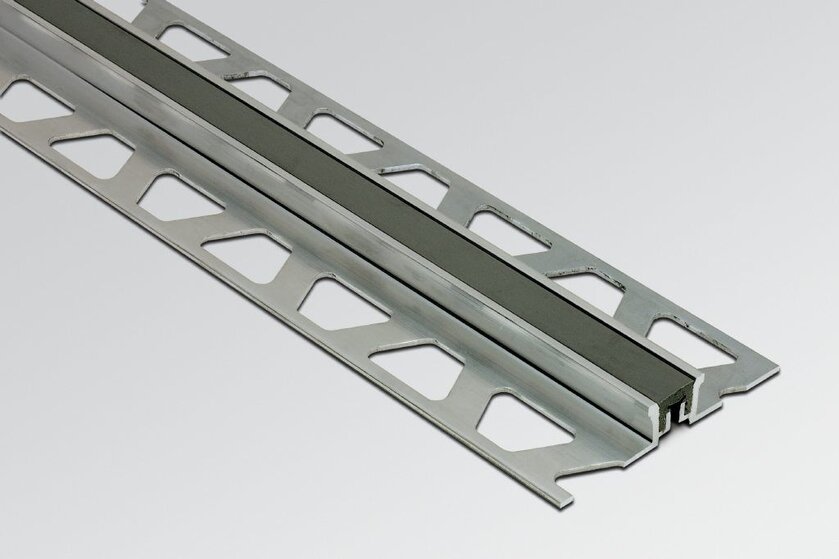BS 5385-4 advises that stresses may develop within the tiling system as a result of movements due to such factors as drying shrinkage and moisture movements in the background and thermal and moisture changes in the tiling. These stresses, if not properly controlled, can be sufficient to cause loss of adhesion and bulging or cracking of the tiling, sometimes with dramatic effect.
4.2 Sealant Movement Joints
4.2.1 Types of joint
There are two basic types of movement joints in floors, structural or non-structural joints and non-structural or non structural joints. A structural joint passes through the tile, screed and floor slab. A non structural joint passes through the tile and screed only and does not penetrate the floor slab
Movement at a structural joint is brought about by structural movement of the building and may be caused by thermal changes, producing both expansion and contraction, or by permanent shrinkage of the building causing opening and closing of the joint but is not cyclic. Non structural joints are used to allow shrinkage of the floor slab relative to the tiles. Non structural joints are made in the covering to allow the differential movement to occur without damage to the tiles; the principal movement being the closing of the joint with only minimal thermal movement. Structural and non structural joints are subject to different movement patterns that influence the choice of sealant types.
The filler or backing material immediately below the sealant should be compatible with the sealant being used. It should be compressible and should support the sealant. It needs to be of a material type that the sealant will not adhere to. Such materials include closed cell foam polyethylene and appropriate closed cell rubber where additional support is required. Where there is insufficient joint depth to accommodate a joint backing material and the required sealant depth polyethylene bond breaker tape may be used.
And a pic for you .... All direct from bs...
View attachment 79671


